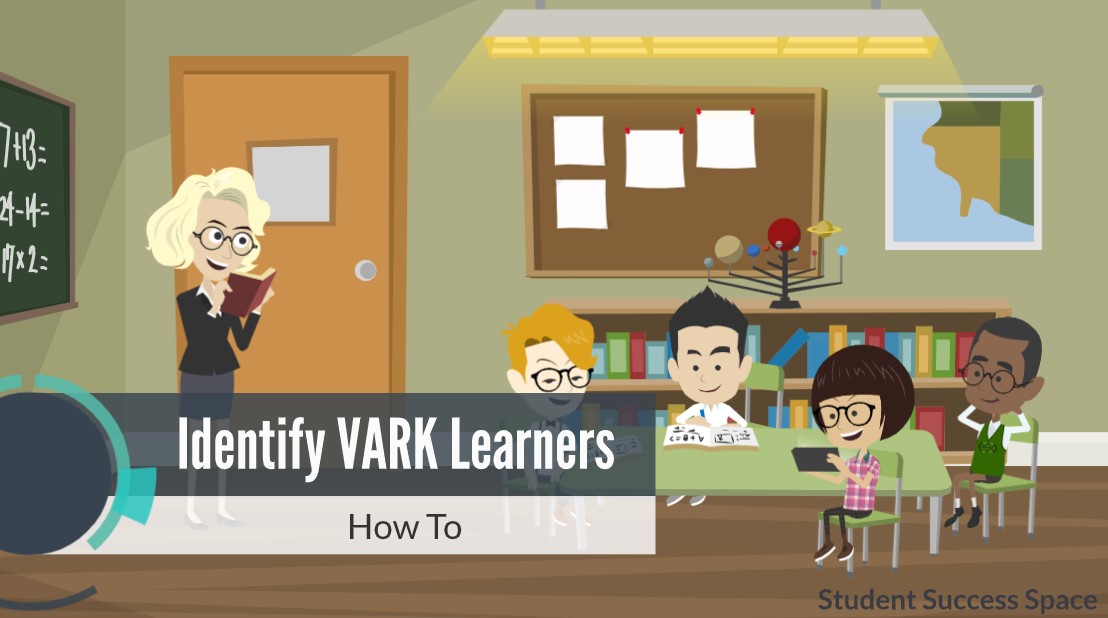
The acronym VARK indicates the varying learning styles within Fleming’s learning personality theory. It stands for visual, audio, read/write and kinesthetic learners.
Neil Fleming, an educator, has devoted his career to investigating learning styles and determining how individuals learning through modality preferences. In 1987, Fleming originally developed his theory working with Barbe’s VAK model. However, Fleming added one additional area, read/write learning style, to the model.
Visual learners learn by seeing. They have a high ability for visual recall. They prefer to learn using visual representations such as graphs, posters, maps, displays. They frequently use hand movements while talking and have a tendency to look upwards when thinking (Pritchard, 2009). Fleming added the need to recognize that visual learners prefer graphics. The written word would not be as valuable, especially when used as a visual additive in a classroom with only words on media. “It must be more than mere words in boxes that would be helpful to those who have a Read/write preference” (Fleming, 2017).
Aural/auditory learners learn by listening. They favor the audio and have a high ability for auditory recall. They prefer repetition, summaries and benefit from discussions, lectures, stories, Podcasts. These learners have a tendency to tilt their heads and use eye movements when concentrating or recalling information (Pritchard, 2009). Within this learning style, Fleming added chatting and email as they possess more “abbreviations, colloquial terms, slang and non-formal language” (2017).
Read/write learners rely heavily on the written word. This preference of learning style is the most used by traditional educators. The read/write learner prefers to have text as both a way to gather information and to share information. “People who prefer this modality are often addicted to PowerPoint, the Internet, lists, diaries, dictionaries, thesauri, quotations and words” (Fleming, 2017).
Kinesthetic learners rely on doing to learn. They heavily depend on interactions within the learning environment and especially with their bodies. They will easily recall events or information attached to an experience or the feelings of a physical event. They learn best through field trips, physical activity, manipulating objects and touch. Kinesthetic learners tend to have high difficulty in sitting still and need frequent breaks when learning.
To identify the type of learner, including those learners that are multimodal (meaning those learners that display more than one preference), there are a few options.
- First is a questionnaire that can be accessed online.
- Second can be accomplished by watching individuals and paying attention to learning preferences.
For instance, when giving an individual a list of options to study and learning information, what do they gravitate toward? Do they prefer to read the information? Will they choose to role play? Let’s take a moment to look at the learning preferences for each of these types:
Visual:
- gestures
- pictures
- posters
- videos
- underlining
- graphs
- symbols
- diagrams
Auditory:
- lectures
- discussion
- recordings
- describe overheads and pictures
- conversations
- interviews
Read/Write:
- lists
- headings
- readings
- notes
- manuals
- handouts
- writing
- words
Kinesthetic:
- field trips
- examples
- application
- hands-on
- trial and error
- collections
- exhibits
- role playing
VARK is one of the easiest learning theories to implement into a learning environment and to increase learning comprehension.
Follow us on Instagram: MBTI.Specialist
Follow us on YouTube: StudentSuccessSpace
Want to learn more about this topic?
Learn more about MBTI on Udemy.com. Search for Tracy Atkinson’s courses.
Or read about MBTI. Search for Tracy Atkinson’s publications on Amazon.

Comments are closed